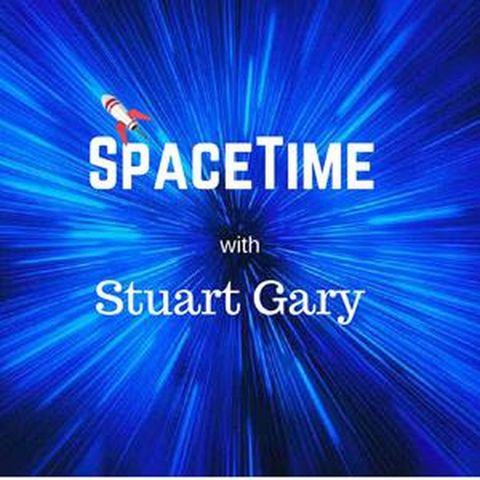67: Diamonds Rain on Neptune and Uranus

Aug 25, 2017 ·
53m 56s
Stream episodes on demand from www.bitesz.com (mobile friendly) Help support SpaceTime, become a patron for as little as $3 per month. And we have rewards. Check out the details at...
show more
Stream episodes on demand from www.bitesz.com (mobile friendly) Help support SpaceTime, become a patron for as little as $3 per month. And we have rewards. Check out the details at https://www.patreon.com/spacetimewithstuartgary * Diamonds rain on Neptune and Uranus Scientists have created diamond rain during experiments mimicking the conditions deep inside the giant ice planets Uranus and Neptune. The findings represent the first time diamond rain was created in the laboratory under the sorts of extreme pressures and conditions likely to occur inside the solar systems ice giants. *Large, distant comets more common than previously thought A new study has warned that there are far more long period comets out there than previously thought. The findings are based on observations by NASA’s Wide-field Infrared Survey Explorer or WISE spacecraft. *Impact winter from the dinosaur killing asteroid could have thrust Earth into two years of darkness A new study claims the tremendous amounts of soot lofted into the air from global wildfires following the asteroid impact which wiped out all the non-avian dinosaurs together with 75 percent of all other life on Earth 66 million years ago, would have plunged the planet into darkness for nearly two years. The findings indicate the fires and ejected debris from the impact would have shut down photosynthesis, as well as drastically cooling the planet, dramatically changing the climate and further contributing to the mass extinction that marked the end of the age of dinosaurs. *Japan launches new navigation satellite The Japanese Aerospace eXploration Agency JAXA has successfully launched an H-IIA rocket carrying a new Japanese Navigation system satellite. The H-IIA F35 mission blasted off under clear blue skies from the Tanegashima Space Centre south of Tokyo carrying the Quasi-Zenith Satellite System spacecraft – the MICHIBIKI 3 -- into geostationary transfer orbit. *The Science Report A new tool that helps physicians identify a sub-group of people with Autism spectrum disorders. Warnings that the melting Greenland ice sheet could accelerate the rise sea levels more than expected. USB connections more vulnerable to information leakage than previously thought. The majestic female statue at an archaeological site, challenging sciences understanding of the role of women in the ancient world. Warnings that even a small reduction in childhood measles vaccinations will produce a disproportionately large increase in measles cases Skeptics guide to vaccinations and the anti-vaxers’ lobby. For Enhanced Show Notes, including photos to accompany this episode: http://www.bitesz.com/spacetime-show-notes Subscribe, rate and review SpaceTime at all good podcasting apps…including iTunes, Google Podcasts, Stitcher, Pocketcasts, Podbean, Radio Public, Tunein Radio, google play, etc Learn more about your ad choices. Visit megaphone.fm/adchoices
See acast.com/privacy for privacy and opt-out information.
show less
See acast.com/privacy for privacy and opt-out information.
Information
| Author | bitesz.com |
| Website | - |
| Tags |
-
|
Copyright 2024 - Spreaker Inc. an iHeartMedia Company
